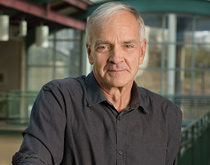When I joined the Robotics Institute in 1984, I realized quickly that I wasn’t merely joining a research unit like any other unit at any other academic institution. I was taking part in an adventure that would unfold over years.
 While this realization wasn’t prompted by impressive resources or by the size of the endeavor (back then, the institute’s seminar meeting would fit comfortably in a small conference room!), it was prompted by the shared vision, intense energy, and unbridled talent of the institute’s researchers. Some were developing the first outdoor autonomous mobile robots that led, 30 years later, to the development of self-driving cars and field applications for mobile systems; others were creating artificial vision systems that provided the foundation of today’s thriving field of computer vision.
While this realization wasn’t prompted by impressive resources or by the size of the endeavor (back then, the institute’s seminar meeting would fit comfortably in a small conference room!), it was prompted by the shared vision, intense energy, and unbridled talent of the institute’s researchers. Some were developing the first outdoor autonomous mobile robots that led, 30 years later, to the development of self-driving cars and field applications for mobile systems; others were creating artificial vision systems that provided the foundation of today’s thriving field of computer vision.
Three decades later, robotics technologies are changing the way we work in a variety of fields, from agriculture and mining to space exploration. They are transforming the way we engage in routine activities such as driving or in daily activities in the home and office. Progress is being made in designing robots that can help, assist, and collaborate with people, and this progress is recognized nationally through programs such as the National Robotics Initiative, of which Carnegie Mellon is an essential partner.
Our past successes challenge us to build upon this legacy. For many years, the only source of robotics research was in academia, in particular at CMU. Now a vibrant Robotics industry has emerged, including “traditional” companies building their own resources in robotics research and development, often led by our own graduates. In academia, new educational programs designed around Robotics themes are emerging, inspired by the institute’s leadership in creating PhD and MS programs in Robotics. CMU’s contribution to these advances has been great. But these very successes challenge us to reexamine our role and approach to research and education in Robotics as we move into the next phases of this adventure.
In research, we need to further promote our interdisciplinary, communal style that has been our strength since the institute’s creation. For example, development of the next-generation of robots that can physically interact with people involves a blend of disciplines ranging from material science for flexible actuators to artificial intelligence and machine learning. Combining a spectrum of topics from mathematical and algorithmic techniques to designing and integrating physical mechanisms is hard, but it reflects CMU’s strength as the one-stop shop for robotics research.
In education, the expansion of robotics-related technologies in industry will generate enormous demand for talented students trained at the highest standard of education in robotics. We’re uniquely poised to address this demand given our foundation and history in robotics education programs. We must expand them by developing innovative ways to deliver project-based content, by promoting the same comprehensive approach to our education offerings that has been successful in our research programs, and by developing relationships with other departments and colleges to provide Robotics education for the next generation of researchers and entrepreneurs.
I’m excited to work with the CMU community as we take full advantage of these rapidly expanding opportunities. We’ve inherited a wonderful foundation from the institute’s creators and are ready to shape the future of Robotics.
—Martial Hebert



